About
Goke Ceramics began in 2018 as the seed of an idea to make beautiful ceramics for contemporary audiences, inspired by ancient Chinese and Japanese ceramic production, and the traditions of British pottery of the 18th century industrial revolution, imitating, emulating, and reinventing those traditions.
Read below to learn more.
Hello! I am Gwen Kelly, the artist and maker behind Goke Ceramics. I have been obsessed with pottery and art for as long as I can remember. As a kid I spent hours and days in museums, staring at cases full of ancient ceramics, fascinated with their forms, colors, and the infinite variety of styles produced by different cultures in different periods. I decided I wanted to be an archaeologist when I grew up.
I stayed true to that dream, and studied archaeology in college, and continued on to graduate school. I got my Ph.D. in Archaeology and Anthropology from the University of Wisconsin - Madison in 2013.
Gwen excavating at Kadebakele, Karnataka, India, 2009.
My research focused on ancient South India, on ceramics, stone beads, textiles, and other crafts. I studied and collaborated with Indian potters in experimenting with reproducing those ancient pots. Though I left my full time academic job in 2017, I am still interested in those ancient craft traditions of South Asia.
Throughout my academic career, art was my hobby, my creative outlet, my way of staying sane. I took courses in printmaking and ceramics, and worked on my art in my “spare time”.
After leaving my full time teaching position I decided to pursue both pottery and printmaking, developing my skills and abilities, aiming to produce the highest quality work.
Since a huge part of my love of pottery also comes with my love of archaeology, and the ways in which archaeologists look and and study ceramics, to understand cultures, to determine the dates of archaeological sites, and as a fundamental unit of analysis for a wide range of archaeological and academic questions, I see my work in pottery, at least in part, as speaking to future archaeologists about the present.
In my work, I’m playing with different concepts of time. I make pottery, prints, and pottery with prints (transferware), and in doing so, each piece evokes the passage of time, the significance of images, techniques, even fossil casts, as markers of time.
My work variously draws from and refers to Chinese, Japanese ceramic traditions, and to the South Indian ceramics both past and present, that I studied as part of my dissertation research. In addition, I draw certain aesthetic elements from British, European, and American ceramic arts, including those which also emulated, imitated, and appropriated earlier Chinese and Japanese traditions. Blue and white, and especially techniques of printing and transferring images in blue cobalt pigment onto white porcelain pottery emerged in Europe only in the 17th and 18th centuries. This tradition was born explicitly to emulate the hand painted blue and white porcelains of those Chinese and Japanese ceramics that were appealing to European audiences both for their aesthetic qualities and their exotic appeal. I am fascinated by this history, in which European artists and artisans imitated and invented an ‘oriental’ aesthetic, such as willow ware, which came to be considered as foundational to the British pottery mass production of the 18th and 19th century. I consider my work in printing and transferring, using the blue and white palette, as a means to address and comment on this complex global history. To be a potter today is inevitably to be the inheritor of a vast, deep, and glorious tradition of making things in clay. This history is beautiful, complex, and, since the 16th century, deeply enmeshed in histories of colonization, exploitation, and oppression. To be a part of this tradition demands that we embrace those histories, at least attempt to understand them, and to acknowledge with profound gratitude the debt we owe to all those who came before, to their knowledge and experimentation, to their creativity and generosity.
It is because of these complex histories, and thanks to the countless potters who came before us, that we are constantly learning from the past, creating the present, and speaking to the future.



